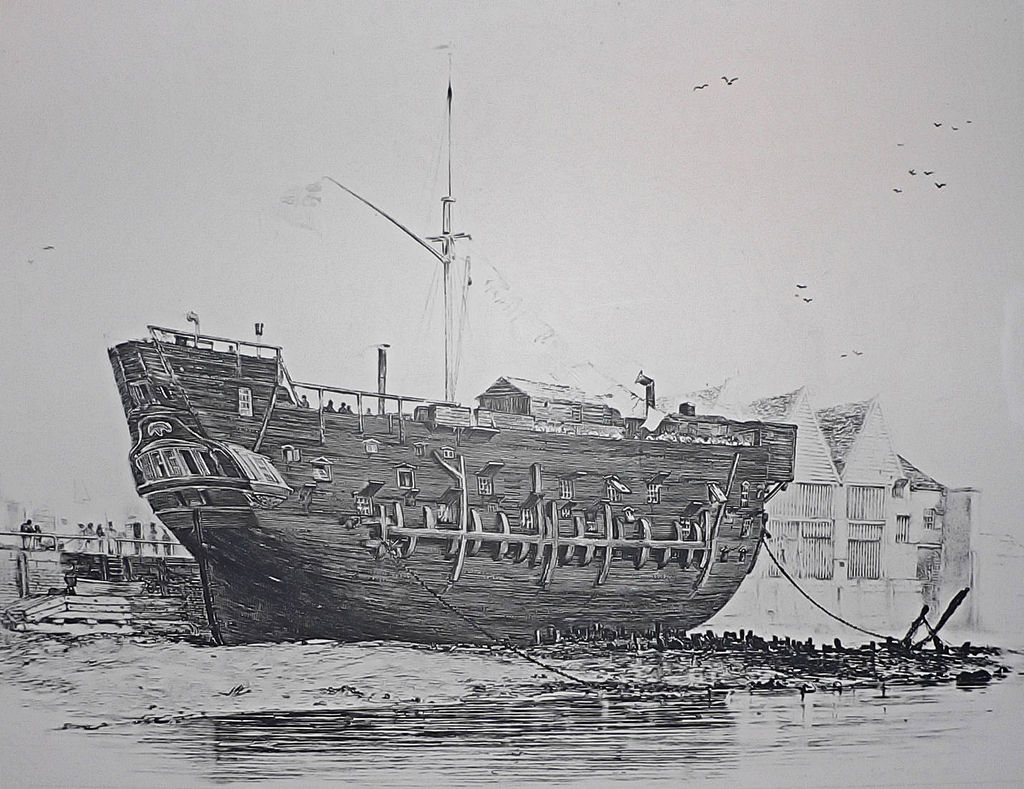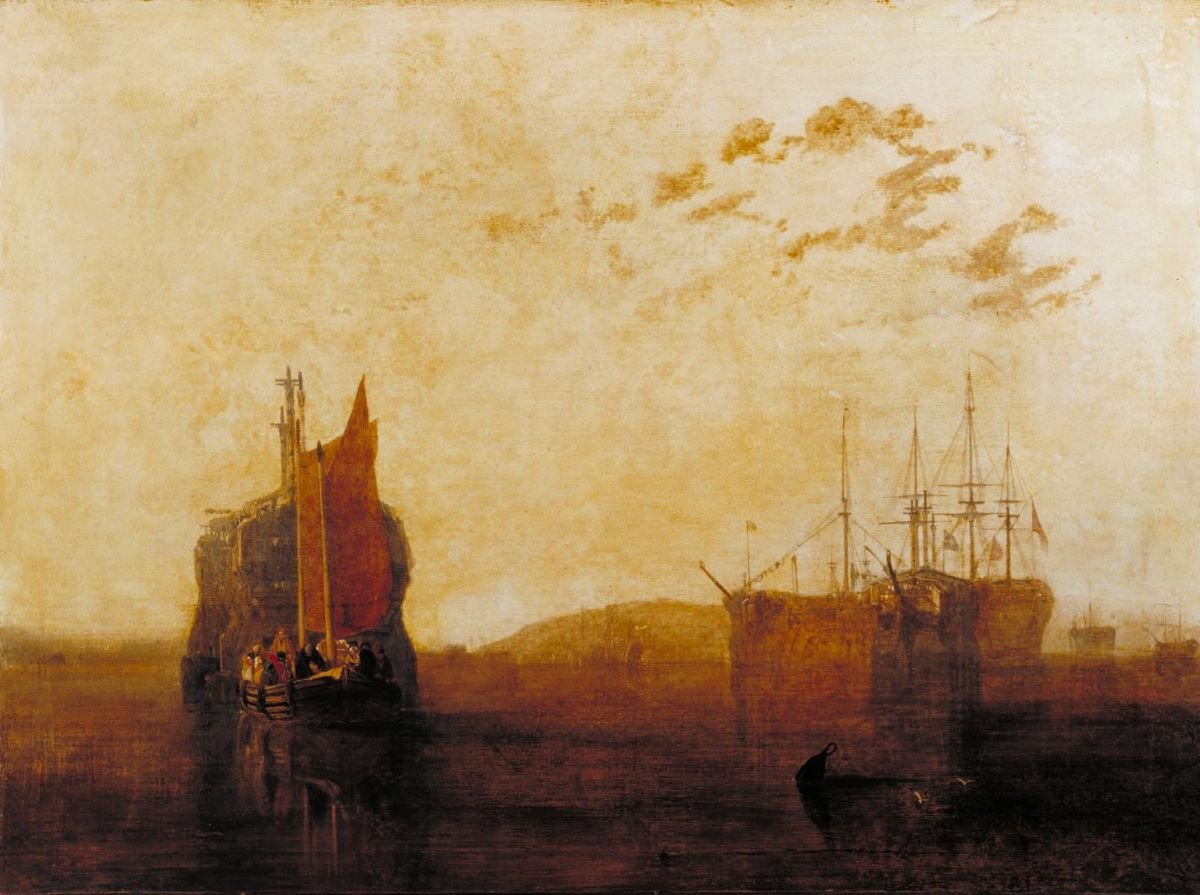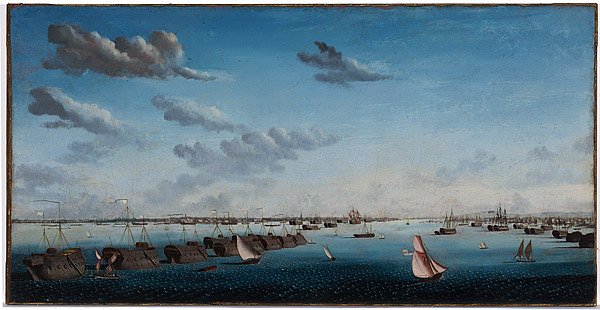
Priti Patel’s plan to use decommissioned ships as “processing centres” for asylum-seekers recalls one of the darkest chapters of British history.
On Wednesday, the Financial Times reported that home secretary Priti Patel had asked officials to explore the construction of a “processing centre” for asylum seekers on Ascension Island, a volcanic outcrop in the South Atlantic more than 4,000 miles from the UK. St Helena, part of the same British overseas territory and one of the most remote islands in the world, had also been considered as a possible site for this purpose.
Disappointed, perhaps, at the derision with which this idea was greeted, the following day government sources briefed the Times about another one: for floating asylum centres on “retired” ferries. The newspaper reported that oil platforms in the North Sea had also been considered but that the “logistics” were seen as too difficult. Similar reasons were given for not proceeding with the South Atlantic scheme, while “legal and diplomatic ramifications” had apparently stood in the way of a suggestion to set up processing centres in Moldova, Morocco and Papua New Guinea (yes, really).
At no point does common human decency appear to have entered into the government’s calculations. Indeed, it seems clear that these proposals have been drawn up with one aim: deterrence. In other words, to make the prospect of the treatment they would receive at the hands of British officials so unpleasant that people seeking refuge from war and persecution, or simply a better life, would not see the UK as a place where this might be available.
The idea of ships as “hostile environments” for those seen as undesirable has a long and very dark history in this country, though it is unlikely that Priti Patel – one of the dimmest ministers in an outstandingly stupid government – is aware of this.
One of the best sources for this history is a Francis Abell’s Prisoners of War in Britain 1756 to 1815: A record of their lives, their romance and their sufferings. Writing in 1914, Abell gave a richly detailed account of “the prison ship as a British institution for the storage and maintenance of men whose sole crime was that of fighting against us”, something that in his view “must for ever be a reproach to us”.
As Abell writes:
“There is nothing to be urged in its favour. It was not a necessity; it was far from being a convenience; it was not economical; it was not sanitary. Man took one of the most beautiful objects of his handiwork and deformed it into a hideous monstrosity.”
As he describes, the British prison hulks were “hells upon water” and “the lives of those condemned to them were lives of long, unbroken suffering”. And though the most infamous of these hulks were those off the coast of Kent and Hampshire, there were many in the South West, too, notably in the Tamar estuary near Plymouth.
Abell’s book focuses mainly on the suffering of two groups of prisoners: Americans captured in the War of Independence and French combatants captured during the Napoleonic wars. He details a horrifyingly brutal regime that combined corruption and cruelty in equal measure.

From the Tate
One of many contemporary accounts by prisoners who had survived these conditions that Abell draws on is that of the French sailor and marine artist Ambroise-Louis Garneray, who was captured in the West Indies and then held for nine years on board the hulk Prothée at Portsmouth. On arrival there, Garneray was “stripped, plunged into a cold bath, and clothed in an ill-fitting orange-yellow suit, on the back of which the large letters T. O. proclaimed him as under the care of the Transport Office.”
Garneray’s initial impression of the inhabitants of the Prothée is of a mob of “dead people come out for a moment from their graves, hollow-eyed, earthy complexioned, round backed, unshaven, their frames barely covered with yellow rags, their bodies frightfully thin”.
The ship itself he describes as
“a black, shapeless sarcophagus, of which the only parts open to air was the space between the fo’c’sle and the poop and the fo’c’sle itself, which was unbearable from the smoke of the many chimneys on it. Each end of the ship was occupied by the garrison, the officers aft and the soldiers forward. A stout barrier divided the guard from the prisoners, which was so garnished with heavy-headed nails as to seem like iron, and was fitted with loop-holes for inspection, and, if needs be, for firing through. On the lower deck and in the lower battery were packed seven hundred human beings.”
Unsurprisingly, prisoners frequently attempted to escape these hellish conditions, and were often assisted in doing so by outsiders who had reason to visit the prison ships (Abell observes that “there was hardly a man who had dealings with the hulks who would not help the prisoners to escape for money”).
The punishment for those captured in such attempts were barbaric in the extreme, including the “Black Hole”: “a prison six feet square at the bottom of the hold, to which air only came through round holes not big enough for the passage of a mouse. Once and once only in the twenty-four hours was this cachot visited for the purpose of bringing food and taking away the latrine box. Small wonder that men often went mad and sometimes died during a lengthened confinement, and that those who came out looked like corpses.”

Starvation rations and extreme deprivation of every sort were standard practice on the hulks. Procurement contracts for prison supplies seem to have been administered in a way more than a little reminiscent of the contracts for PPE awarded by Boris Johnson’s government. As Abell writes:
“We read of arrangements being discussed between contractors and the stewards of prison ships by which part of the statutory provisions was withheld from the prisoners; of hundreds of suits of clothing sent of one size, of boots supposed to last eighteen months which fell to pieces during the first wet weather; of rotten hammocks, of blankets so thin that they were transparent; […] Out of 1,200 suits of clothes ordered to be at Plymouth by October 1807, as provision for the winter, by March 1808 only 300 had been delivered!” The result was that “hundreds of poor wretches had been compelled to face the rigour of an English winter on the hulks in a half-naked condition […] It is painful for an Englishman to be obliged to write thus upon the subject of fraudulent contractors, their aiders and abettors.”
Abell is clearly aware that his readers, in 1914, might find it hard to believe that such cruelty and corruption could have existed under a British government. But his remarks on this may resonate rather differently with readers in 2020:
“It may be urged that Governments which really intended to act fairly would have taken care that they [the detainees] were suitably served. So we think today. But it must always be borne in mind that the period covered in this book—from 1756 to 1815—cannot be judged by the light of today. It was an age of corruption from the top to the bottom of society, and it is not to be wondered at that, if Ministers and Members of Parliament, and officers of every kind—naval, military, and civil—were as essentially objects of sale and purchase as legs of mutton and suits of clothes, the lower orders of men in authority, those who were in most direct touch with the prisoners of war, should not have been immune from the contagion.
“Most exactly, too, must it be remembered by the commentator of today that the age was not only corrupt, but hard and brutal; that beneath the veneer of formal politeness of manner there was an indifference to human suffering.”
Anyone supposing that Boris Johnson’s ministers are more likely than their corrupt and venal eighteenth-century counterparts to treat asylum seekers humanely on their latter-day version of the prison hulks has probably not been paying sufficient attention over the past few months.
The full text of Francis Abell’s Prisoners of War in Britain 1756 to 1815: A record of their lives, their romance and their sufferings is published as a free book by Project Gutenberg, here.




